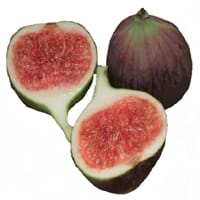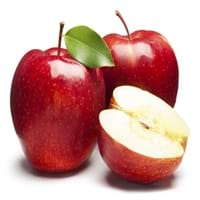Benefits
Health Benefits
Cancer prevention, Controls blood pressure, Heart care, Increase in haemoglobin, Prevents constipation, Prevents macular degeneration, Reduces nervous tension
Cancer prevention, Supports healthy Liver function, Diarrhea treatment, Heart care, Increases metabolic rate, Neutralizes irritable bowel syndrome, Helps Prevent cataract, Prevents constipation, Prevents gall stones, Prevents high blood pressure, Helps prevent Parkinson's disease, Reduces risk of asthma, Treatment of alzheimer's disease
General Benefits
Controls blood pressure, Helps in weight loss, Maintains healthy cholesterol level, Strengthens bones
Boosts immune system, Helps in weight loss, Maintains healthy cholesterol level, Whitens teeth
Skin Benefits
Brightens and lightens complexion, Hydrates skin, Skin rejuvenation, Treatment of acne
Anti-aging benefits, Brightens and lightens complexion, Hydrates skin, Treatment of acne, Treatment of dark spots, Treatment of puffy eyes
Hair Benefits
Good conditioner, Regulates hair growth, Softening mask
Prevents hair loss, Promotes longer and healthier hair, Regulates hair growth, Treatment of dandruff
Allergy
Allergy Symptoms
Abdominal pains, Anaphylaxis, Coughing, Headaches, Hives, Itching, Nasal congestion, Skin rash, Sneezing, Sore throat, Swelling of hands
Abdominal pains, Itching, Swelling of mouth, tongue or lips, Vomiting
Side Effects
Allergic reaction, Skin rash, Possibly unsafe during pregnancy
Allergic reaction, May consist of poisonous seeds
Recommeded for
Pregnant Women
Yes
Yes
Lactating Women
Yes
Yes
Best Time to Eat
Best if taken as a breakfast (or empty stomach), Don't consume at night and before bed, Morning time (before lunch)
Any time except an hour after meal, Best if taken as a breakfast (or empty stomach), Don't consume at night and before bed
Nutrition
Serving Size
100 g
100 g
Carbs
19.20 g
13
13.81 g
33
Fiber
2.90 g
21
2.40 g
24
Sugar
16.30 g
5
10.00 g
20
Protein
0.80 g
37
0.30 g
99+
Protein to Carb Ratio
0.04
24
0.02
26
Vitamins
Vitamin A (Retinol)
7.00 mcg
29
3.00 mcg
32
Vitamin B1 (Thiamin)
0.06 mg
15
0.00 mg
99+
Vitamin B2 (Riboflavin)
0.05 mg
20
0.00 mg
99+
Vitamin B3 (Niacin)
0.40 mg
36
0.10 mg
99+
Vitamin B5 (Pantothenic Acid)
0.30 mg
12
0.10 mg
99+
Vitamin B6 (Pyridoxin)
0.11 mg
12
0.00 mg
99+
Vitamin B9 (Folic acid)
6.00 mcg
29
3.00 mcg
32
Vitamin C (Ascorbic Acid)
2.00 mg
99+
4.60 mg
99+
Vitamin E (Tocopherole)
0.11 mg
36
0.20 mg
29
Vitamin K (Phyllochinone)
4.70 mcg
15
2.20 mcg
26
Lycopene
0.00 mcg
9
0.00 mcg
9
Lutein+Zeaxanthin
9.00 mcg
32
29.00 mcg
25
Choline
4.70 mg
26
3.40 mg
28
Fat
0.30 g
28
0.20 g
33
Minerals
Potassium
232.00 mg
30
107.00 mg
99+
Iron
0.37 mg
30
0.10 mg
99+
Sodium
1.00 mg
20
1.00 mg
20
Calcium
35.00 mg
11
6.00 mg
39
Magnesium
17.00 mg
17
5.00 mg
30
Zinc
0.15 mg
18
0.00 mg
30
Phosphorus
14.00 mg
32
11.00 mg
35
Manganese
0.13 mg
25
0.00 mg
99+
Copper
0.07 mg
32
0.00 mg
99+
Selenium
0.20 mcg
15
0.00 mcg
17
Fatty Acids
Omega 3s
0.00 mg
38
9.00 mg
30
Omega 6s
144.00 mg
14
43.00 mg
37
Sterol
Phytosterol
31.00 mg
4
12.00 mg
7
Water Content
79.11 g
99+
85.60 g
36
Ash
0.66 g
17
0.20 g
99+
Calories
Serving Size
100 g
100 g
Calories in Fresh Fruit with Peel
74.00 kcal
10
52.00 kcal
22
Calories in Fresh Fruit without Peel
Not Available
48.00 kcal
15
Calories in Frozen Form
71.42 kcal
9
48.00 kcal
17
Calories in Dried Form
249.00 kcal
30
243.00 kcal
32
Calories in Canned Form
69.00 kcal
15
67.00 kcal
16
Calories in Foods
Calories in Juice
65.00 kcal
19
47.00 kcal
31
Calories in Jam
360.00 kcal
5
200.00 kcal
26
Calories in Pie
450.00 kcal
1
265.00 kcal
31
Characteristics
Type
Tree fruit
Tree fruit
Season
Summer, Winter
All seasons
Varieties
Abyad, Adriatic, Alma, Atreano, Bataglia, Black Bethlehem, Black Madeira, Black Mission, Brown Turkey, Sierra, Calimyrna, Kadota, Deanna, Figoin and Hardy Chicago Fig
Red Delicious, Golden Delicious, Gala, Fuji, Granny Smith, Arkansas Black, Sampion, Pink Lady, Cameo, Jonagold, Mc Intosh, Ananasrenette, Lobo, Pacific Rose, Yellow transparent and Bramley
Seedless Variety
Yes
No
Color
Green, Purple, Red
Green, Red, Yellow
Inside Color
Pink
White
Shape
Conical
Round
Texture
Fleshy
Crunchy
Taste
Sweet
Sweet, Sweet-Sour
Origin
Western Asia
Central Asia, Middle East Asia
Grows on
Trees
Trees
Cultivation
Soil Type
Clay, Limestone, Loam, Sandy
Loam
Soil pH
5-7
6-7
Climatic Conditions
Dry, Warm
Cold
Facts
Facts about
- Fig tree is considered as a symbol of abundance, fertility and sweetness.
- The fig is made up of 55% of natural sugar so they are the sweetest fruits.
- Figs are used as a fat substitute in recipes.
- Apples can be as small as a pea and as big as a pumpkin.
- There are more than 8000 varieties of apples.
- Life of an Apple tree can be more than 100 years.
- Apples contain 25% air, therefore they float in water.
In Alcoholic Beverages
Wine
Yes
Yes
Beer
Yes
Yes
Spirits
Yes
Yes
Cocktails
Yes
Yes
Production
Top Producer
Turkey
China
Other Countries
Albania, Algeria, Brazil, Egypt, Iran, Morocco, Syria, Tunisia, United States of America
Chile, France, India, Iran, Italy, Poland, Russia, Turkey, United States of America
Top Importer
France
Russia
Top Exporter
Turkey
China
Scientific Name
Botanical Name
Ficus carica
Malus Domestica
Synonym
Not Available
Malus Communis or Malus Pumila or Pyrus Malus
Classification
Domain
Eukarya
Eukarya
Kingdom
Plantae
Plantae
Subkingdom
Tracheobionta
Tracheobionta
Division
Magnoliophyta
Magnoliophyta
Class
Magnoliopsida
Magnoliopsida
Subclass
Alismidae
Rosidae
Order
Rosales
Rosales
Family
Moraceae
Rosaceae
Genus
Ficus
Malus
Species
Ficus carica
M. domestica
Generic Group
Mulberry
Rose












